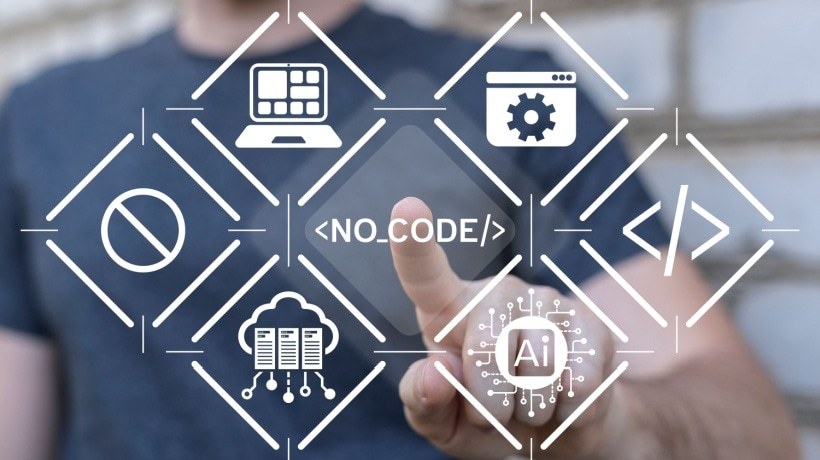Traditional LMSs And LXPs Are No Longer Enough For Your L&D Tech Stack
The Learning and Development (L&D) space is undergoing a digital renaissance. With rapid advancements in Artificial Intelligence (AI), automation, and data analytics, the traditional L&D tech stack is evolving from static platforms like Learning Management Systems (LMSs) and Learning Experience Platforms (LXPs) into a dynamic, learner-first ecosystem. As we approach 2026, organizations must shift from maintaining systems of record to building systems of intelligence.
Why Traditional LMSs And LXPs Fall Short
While LMSs and LXPs have been the backbone of corporate learning, they come with limitations:
- LMSs are rigid and often built for compliance, not growth.
- LXPs improved the learner interface but still rely heavily on content libraries and linear paths.
These platforms were not designed for the agility required in a world where upskilling cycles are shrinking, and learning is increasingly embedded into workflows.
The New L&D Tech Stack: From Static Systems To Adaptive Ecosystems
The L&D tech stack of 2026 will focus on being:
- AI-augmented
Content is recommended, created, and personalized by AI. - Workflow-integrated
Learning is contextual, just-in-time, and embedded in daily tools. - Skills-driven
Shift from content consumption to measurable skill acquisition. - Data-rich and predictive
Actionable analytics drive decision making and learning interventions.
Key Components Of The Next-Gen L&D Tech Stack
1. Skills Intelligence Platforms
These platforms assess existing skillsets, identify gaps, and map personalized development paths. They serve as the foundation for AI-powered upskilling.
2. AI-Powered Content Engines
These tools generate microlearning content in real time based on role, behavior, and knowledge gaps, removing the bottleneck of content creation.
3. Integrated Workflow Learning
Think learning nudges inside your CRM. Contextual learning becomes seamless, relevant, and timely.
4. No-Code Learning App Builders
Empowering L&D teams to build tailored learning journeys without IT dependency.
5. Adaptive Assessment Engines
AI adapts difficulty levels and feedback dynamically, ensuring assessments are personalized and more accurate.
6. Analytics Dashboards With Predictive Models
From course completion to skill mastery forecasting, dashboards now help L&D teams make decisions proactively.
The Role Of AI In Orchestrating The Stack
AI is the connective tissue in this new ecosystem. It personalizes pathways, predicts learner drop-offs, automates content generation, and aligns learning with business outcomes. The role of the L&D professional evolves from curator to orchestrator.
Integration Over Isolation
Rather than standalone tools, the future stack will prioritize interoperability via APIs, integrations, and unified data layers. Platforms must talk to each other and to HR systems, performance management tools, and productivity apps.
Organizational Impact: More Than Just Learning
This reimagined stack will:
- Boost learner engagement.
- Improve time-to-skill.
- Align learning with strategic goals.
- Provide leaders with clarity on workforce readiness.
The Way Forward
The L&D tech stack for 2026 isn't about having the latest tool—it's about having a connected, agile, and intelligent system that empowers people and aligns with business needs. Companies that make this shift will be better equipped to navigate continuous transformation.
2030 Vision: What The AI-Led Learning Ecosystem Could Look Like
As we look toward 2030, the fusion of AI and learning is not just inevitable—it's transformational. The next five years will see L&D evolve from content pushers to ecosystem enablers, where learning is deeply personalized, constantly adaptive, and directly tied to performance and purpose.
The Future Is Frictionless, Continuous, And Human-Centered
Learning in 2030 will be:
- Omnipresent
Learning happens everywhere, across devices, systems, and even wearables. - Autonomous
Systems learn what you need before you do, nudging you in real time. - Intelligent
AI not only curates and delivers, but also designs and evaluates learning. - Human-led
While AI powers scale and precision, humans will ensure emotional and contextual relevance.
What Will Define The AI-Led Learning Ecosystem?
1. Self-Learning Systems
AI engines that continuously improve based on learner behavior, feedback, and outcomes, creating a feedback loop that personalizes at scale.
2. Digital Learning Twins
Every employee has a digital replica that tracks skills, goals, learning preferences, and recommends next-best actions.
3. Emotionally Intelligent Learning
AI recognizes learner mood, engagement, and fatigue to adjust tone, format, and content delivery.
4. Smart Learning Assistants
Think of AI tutors embedded in every learning moment—answering questions, summarizing content, or testing understanding.
5. Decentralized Credentialing
Blockchain-based certifications that are portable, verifiable, and tailored to micro-skills.
A Day In The Life Of A Learner In 2030
8:30 AM: Your digital twin recommends a quick lesson on negotiation based on your calendar.
10:00 AM: During a Zoom call, your AI assistant nudges you to watch a microlearning clip based on a missed sales opportunity.
3:00 PM: You pass a skill assessment embedded in your workflow; your credentials update in real time.
6:00 PM: AI checks in on your learning goals and suggests next steps while syncing with your manager's priorities.
The Role Of L&D Professionals
In 2030, L&D leaders will:
- Be architects of learning ecosystems.
- Leverage AI to drive business-relevant skills.
- Focus on designing emotional and inclusive learning experiences.
Governance And Ethics In The AI-Led Era
- Transparency
Clear rules on how learner data is used. - Bias mitigation
Auditing AI to prevent reinforcement of societal bias. - Human oversight
Ensuring AI supports—not replaces—human judgment.
Challenges Ahead
- Resistance to change and tech adoption.
- Data privacy concerns.
- Need for upskilling L&D teams themselves.
Conclusion: Learning Ecosystems That Think, Adapt, And Empower
The AI-led learning ecosystem of 2030 is not a replacement for human insight but an amplifier of it. It's a space where learning becomes a living, breathing part of work and life. For L&D teams, the challenge is clear: start building today for the ecosystem of tomorrow.
The future of L&D is not a single platform or tool—it's an intelligent, interconnected ecosystem. By 2026, we'll see a clear shift from legacy LMS and LXP systems to agile, AI-powered infrastructures that are skills-driven, workflow-integrated, and built for measurable outcomes. No-code tools will empower L&D teams to build without barriers, while data-rich platforms will provide predictive insights that align learning with business impact.
Looking ahead to 2030, learning becomes frictionless, deeply personalized, and emotionally intelligent. AI evolves from being a recommendation engine to a true learning partner—anticipating needs, adapting content in real time, and even managing credentials through decentralized systems. Digital learning twins, smart assistants, and autonomous upskilling pathways will define everyday learning.
Yet, the heart of this transformation remains human. L&D professionals will become orchestrators of experiences—blending empathy, ethics, and AI to craft learning that's inclusive, adaptive, and future-ready.
Organizations that begin building this ecosystem today—layer by layer, tool by tool—will be best positioned to navigate the future of work with agility and purpose. Because in tomorrow's workplace, learning won't just support growth—it will drive it.









